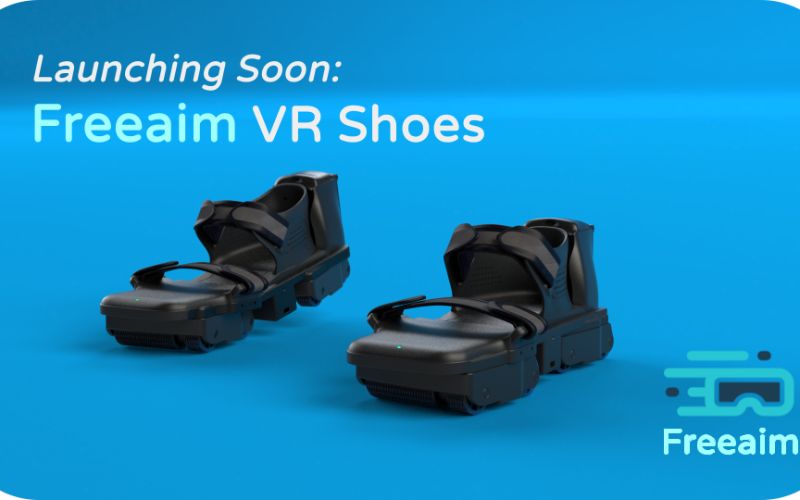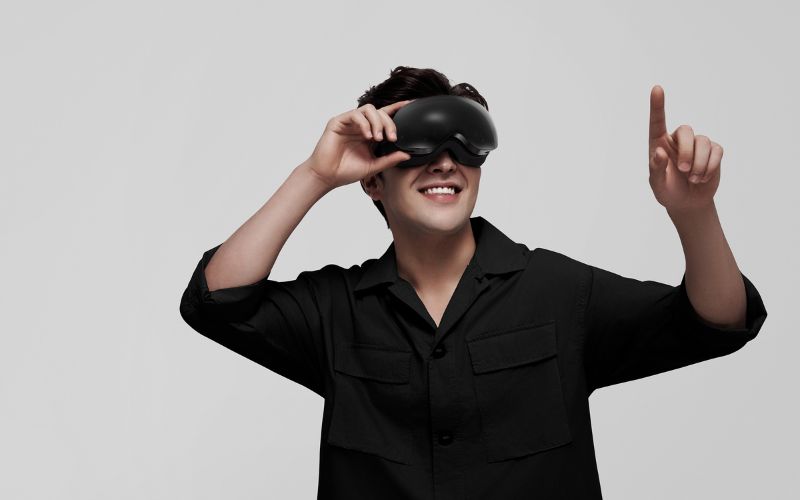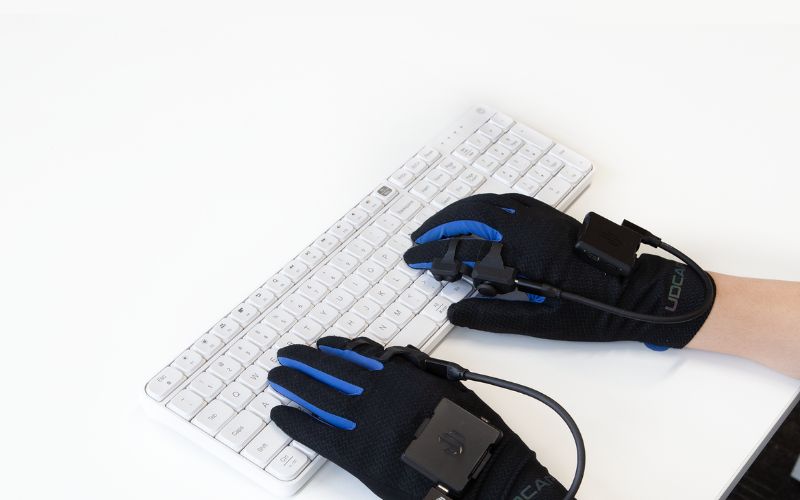I didn’t think I’d geek out over glasses and shoes, but here we are—AWE USA 2025 changed that. Now I’m rethinking what “everyday tech” even means.
Augmented World Expo USA 2025 (AWE) brings together over 250 exhibitors, all showing off the newest tech in spatial computing. It calls itself the top XR event around—and yeah, that feels accurate. You get to explore next-gen tools and try gear that pushes digital interaction forward. Virtual reality isn’t just some sci-fi dream anymore. People now create full-blown digital worlds with stunning detail. A lot of features that once needed AR could now work in VR instead.
Sure, I get the appeal of strolling through a mall or riding a coaster at a theme park. That experience still hits different. But if I just want to pick up a microwave, I don’t care about fancy music or cool displays. I just want speed and ease. With the tech rolling out at AWE, it looks like that kind of shopping could happen inside a headset soon. So maybe, what felt like a far-off future isn’t so far anymore.
1. AR glasses: Snap Specs
AR glasses might not seem like a big deal yet, but I can see them getting there. If Meta opened up access to the Orion glasses for regular users instead of keeping them exclusive to developers, I’d be first in line. That’s where Snap changes the game.
Snap CEO Evan Spiegel made a bold claim at AWE 2025: “We’ve spent 11 years and invested more than $3 billion in building augmented reality glasses.” That level of effort shows real commitment.
Snap has aimed higher for a long time. While Snapchat brought a new way of connecting through short messages, the company always imagined something beyond the screen. “The tiny smartphone limited our imagination. It forced us to look down at a screen, instead of up at the world,” Snap said in a press release.
Now, Snap is preparing to launch its 5th generation of Spectacles, currently slated for a 2026 release. Developers are already working on new features, expanding what these glasses can do. The company calls them Specs, and they will combine an ultrapowerful wearable computer with a lightweight design and see-through lenses.
Snap is also updating Snap OS with tools from OpenAI and Gemini. Gemini handles images well. OpenAI brings powerful reasoning. It helps to have both.
2. Freeaim VR Shoes

Look around, phones, TVs, and games cost more than ever. But why does VR hit the wallet so hard? A big part of it comes from how new the technology still is.
Developing motion systems, building custom hardware, and refining the experience all take time and resources. That’s where Freeaim steps in. Their latest VR shoes challenge the trend by offering a more budget-friendly option without cutting corners. They’ve managed to blend solid engineering with real comfort, bringing smooth VR movement closer to more people.
The Freeaim VR Shoes mark a major step forward. They feel light, fit well, and stay tough without losing the wow factor of virtual worlds. I’m impressed that they now connect to a PC in 2 different ways. Before, they only used Bluetooth. Now, they’ve added Wi-Fi. That gives the Freeaim VR Shoes more flexibility indoors and out. For gamers, this means smoother movement through digital spaces.
The shoes work with SteamVR, all its titles, and some Quest games. You can pick them up for about $1,000. For businesses, it’ll cost more—but Freeaim is clearly aiming big.
“Over the coming years Freeaim’s VR Shoes will help take VR to the next level by introducing easy-to-use, natural and limitless movement,” said Ashley Foxcroft, founder and CEO of Freeaim.
3. Android-based spatial computer: Play for Dream MR

Play for Dream rolled out 3 standout features at AWE after showing off the MR headset at CES. They’re branching out with mixed reality for arcades, eye-tracking tools for healthcare, and seamless SteamVR support for gamers.
Apple may be making headlines with the Vision Pro, but it isn’t the only player in spatial computing. Play for Dream is stepping up with an Android-powered headset that includes an 8K Micro-OLED display, 14ms VST latency, and both hand and eye tracking. The Play for Dream MR is shaping up to be a serious competitor.
For gamers, the headset supports SteamVR titles like Half-Life: Alyx. Wi-Fi 7 and Virtual Desktop enhancements help deliver sharp visuals and smooth gameplay, all without needing to plug into a PC.
What stands out is the pricing. While the Vision Pro starts at $3,499, Play for Dream’s 512 GB model lands at $1,999. Even so, Meta Quest 3 starts much lower at $499.99.
Weight remains an issue. At 1.43 pounds, the MR headset feels just as bulky as the Vision Pro. Support bands can help, but the pressure doesn’t vanish.
4. VR gloves: UDEXREAL UDCAP

UDEXREAL makes some of the lightest and thinnest VR gloves out there. They focus on elastic sensors and smart gear that help capture movement with pinpoint accuracy. Whether you’re into robotics, fitness, or simulation, their tech covers it all.
UDEXREAL’s signature glove, the UDCAP, weighs just 1.6 ounces. You can bend, stretch, and move with ease, all while your fingers get tracked in fine detail. It makes you feel like your hands are right there inside the virtual world. Think concerts, poker nights, or anything else that calls for full immersion.
Old-school industrial gloves don’t cut it. They’re big, stiff, and wear out too fast. Plus, they cost a lot and need special setups. UDEXREAL’s glove breaks through all that. It sells for $699 on the official website, but early birds can grab one for $539 to $599 until July 31.
The UDCon controller kit looks like a smart combo. It blends joystick control with hand gestures, which could open up more natural movement in VR. In games like Rogue Ascent VR, that setup could keep arms and shoulders in constant motion.
5. VTouch WIZPR RING

Over the past few weeks, I’ve had to hop on buses and trains instead of riding my bike. It’s wild how many people feel okay watching videos or listening to music out loud. Some even talk to ChatGPT using audio, and honestly, not everyone needs to hear your questions to an AI. Good thing VTouch came up with something cool.
The WIZPR RING lets you whisper commands quietly to AI helpers like ChatGPT, Gemini, or Alexa. It keeps what you say private and away from anyone nearby. Just bring the ring close to your mouth and speak your command. No more typing on tiny keyboards when you can talk straight into your ring.
Say your kid’s asleep and the lights are still on. Ask the ring to shut them off. As soon as the mic gets close to your lips, it activates and listens. The moment you finish talking, it takes care of the rest. Quiet. Quick. Just how it should be.
6. Microdisplay products: Samsung Display

Samsung Display rolled into AWE USA with some serious heat. Right at the center of the action stood its 1.4-inch RGB OLEDoS panel. This tiny screen packs a wild punch—5,000 pixels per inch crammed into something the size of a watch face. You get crisp, clean visuals that beat out even a 4K TV. And yeah, it even leaves the Meta Quest 3 in the dust.
OLEDoS microdisplays power everything from AR and VR headsets to smart glasses and wearables. They’re the kind of tech that makes digital worlds feel sharp and real.
Samsung didn’t stop there. They pulled out a 1.3-inch version with 4,200 PPI and a peak brightness of 20,000 nits. That one features Micro Lens Array tech. By using convex lens shapes, it boosts the image and widens the view. So whether you’re looking straight ahead or from an angle, the picture stays sharp.
AWE USA 2025 highlights: Final thoughts
Augmented World Expo USA 2025 highlights how close virtual reality is to changing everyday life. Snap’s AR glasses and Freeaim’s VR shoes aren’t just fancy gadgets—they make you rethink what’s possible right now. The WIZPR Ring, letting you whisper commands, offers a glimpse into a quieter, smoother future. It’s wild how quickly these innovations are moving from “maybe someday” to “right now.”